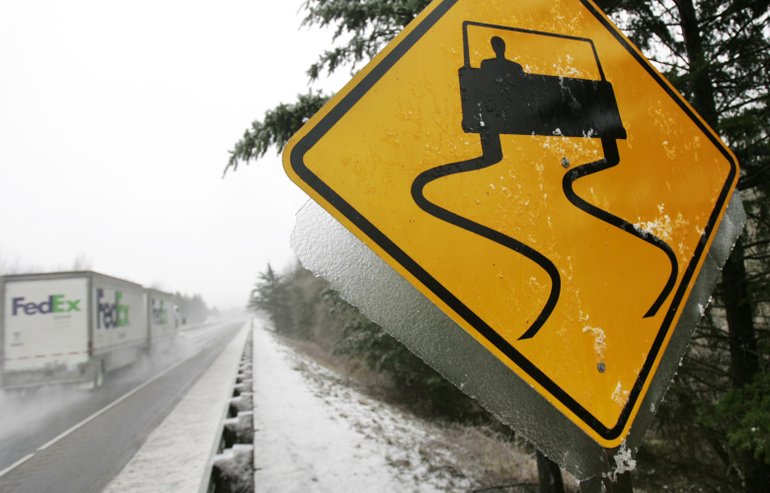De-icing compounds differ on two sides of Columbia
On the late afternoon of Dec. 11, as freezing rain pelted the Columbia River Gorge, sheriff’s deputies reacted to several dangerous spin-outs by closing Interstate 84 between Troutdale and Hood River, Ore. For the next 22 hours, the Portland region was without its major link to the nation’s interior.
Meanwhile, on the north side of the river, state Highway 14 remained open for business.
It was the latest example of a recurring trend in recent years. Icy conditions rendered impassable the four-lane interstate freeway through Oregon, while small vehicles kept puttering along the two-lane highway on the Washington side of the Columbia River. (Washington officials, concerned about a traffic jam of truckers from I-84, conditionally closed state Highway 14 to heavy trucks.)
The difference?
According to transportation officials on both sides of the river, Washington appears to have mastered a salt brine mixture that’s more effective at melting ice. Oregon, concerned about damage to vehicles and the environment, uses a less-corrosive material on its highways.
“The conditions are basically the same through the Gorge on either side of the river,” National Weather Service meteorologist Tyree Wilde said, “so it’s not meteorological.”
Washington officials believe they’ve hit upon the answer.
“The variable is the treatment, in the chemicals that we use,” said Abbi Russell, spokeswoman for the Washington Department of Transportation in Vancouver. “We’re able to keep 14 open, for the most part.”
She credits a concoction of the DOT’s own making.
Paul Simonsen, maintenance superintendent for the DOT in Chehalis, uses excess salt water from a cheese-making plant in Yakima as the basis for his own special salt brine mixture. Workers mix the cheese outwash with additional salt to get a 23.3 percent solution. Then, to offset the corrosive nature of the salt, they mix in de-sugared molasses, which also helps the brine stick to the road surface longer.
Simonsen said the Chehalis shop shipped out 200 truckloads of the stuff last year — about 1 million gallons.
Oregon Department of Transportation spokesman Dave Thompson acknowledged that Washington’s salt brine concoction appears to be a “teensy bit hotter” on ice than the magnesium chloride Oregon uses.
That’s what Brett VandenHeuvel is afraid of.
VandenHeuvel, executive director of the environmental group Columbia Riverkeeper, said his organization hasn’t challenged Washington’s use of the “hotter” salt brine, but noted that too much salt can be lethal for rainbow trout.
“Whatever we dump on the road is going directly into the river,” he said.
Thompson said the trick, with any de-icing compound, is to keep it on the roadway for as long as possible.
“When it’s raining, it doesn’t matter what you put down,” he said. “It’s still going to get washed off. It’s going to help stop the formation of the ice, but for how long until it’s washed away?”
Simonsen said workers are judicious about using just enough material to keep Washington roads clear but minimize harm to the environment or rusting of the undersides of automobiles. He said the agency puts down the equivalent of 200 pounds for every one-mile segment of a single highway lane.
“That’s about three pieces of rock salt in a square foot,” he said. “It’s not very much.”
Workers added one other refinement to the slurry-like mixture, to prevent it from simply kicking off the side of the road.
“We pre-wet the slurry so it comes out like liquid cow poop,” Simonsen said. “It just plops on the road.”
That’s a contrast to the East Coast and Midwest, where rock salt is widely used.
“They just load up trucks with rock salt and spread it like gravel,” Simonsen said. “It runs off the surface and contaminates the environment. Ours dilutes on the pavement, where you want it.”
Oregon officials are watching.
“We can learn from them,” Thompson said. “In the meantime, we’re not willing to go there quite yet.”
Erik Robinson: 360-735-4551, or erik.robinson@columbian.com.



